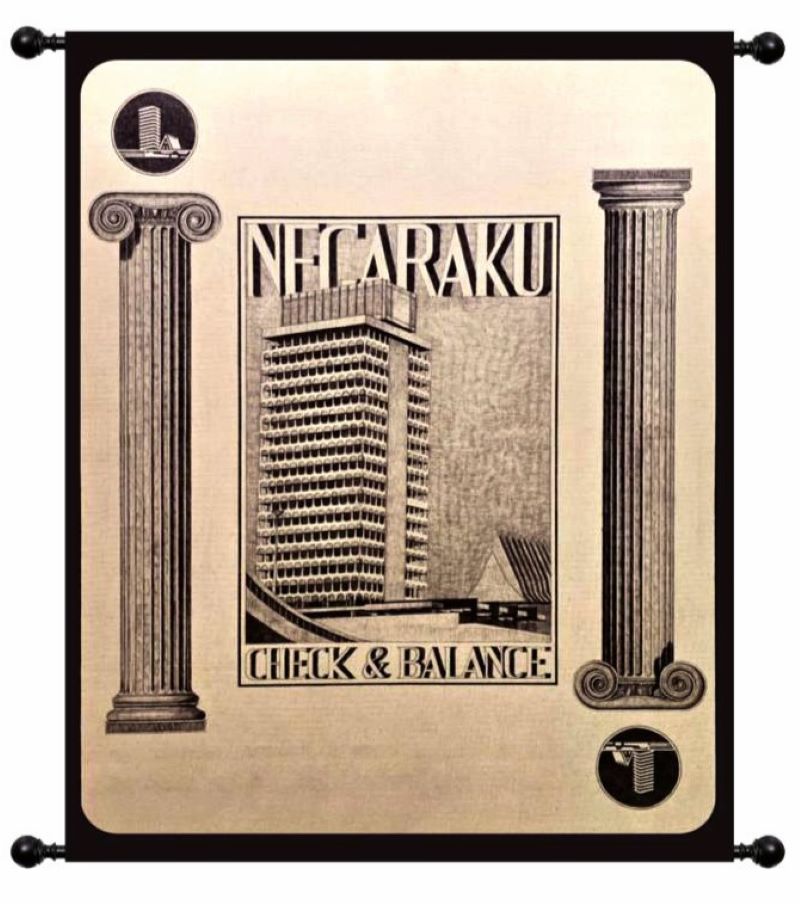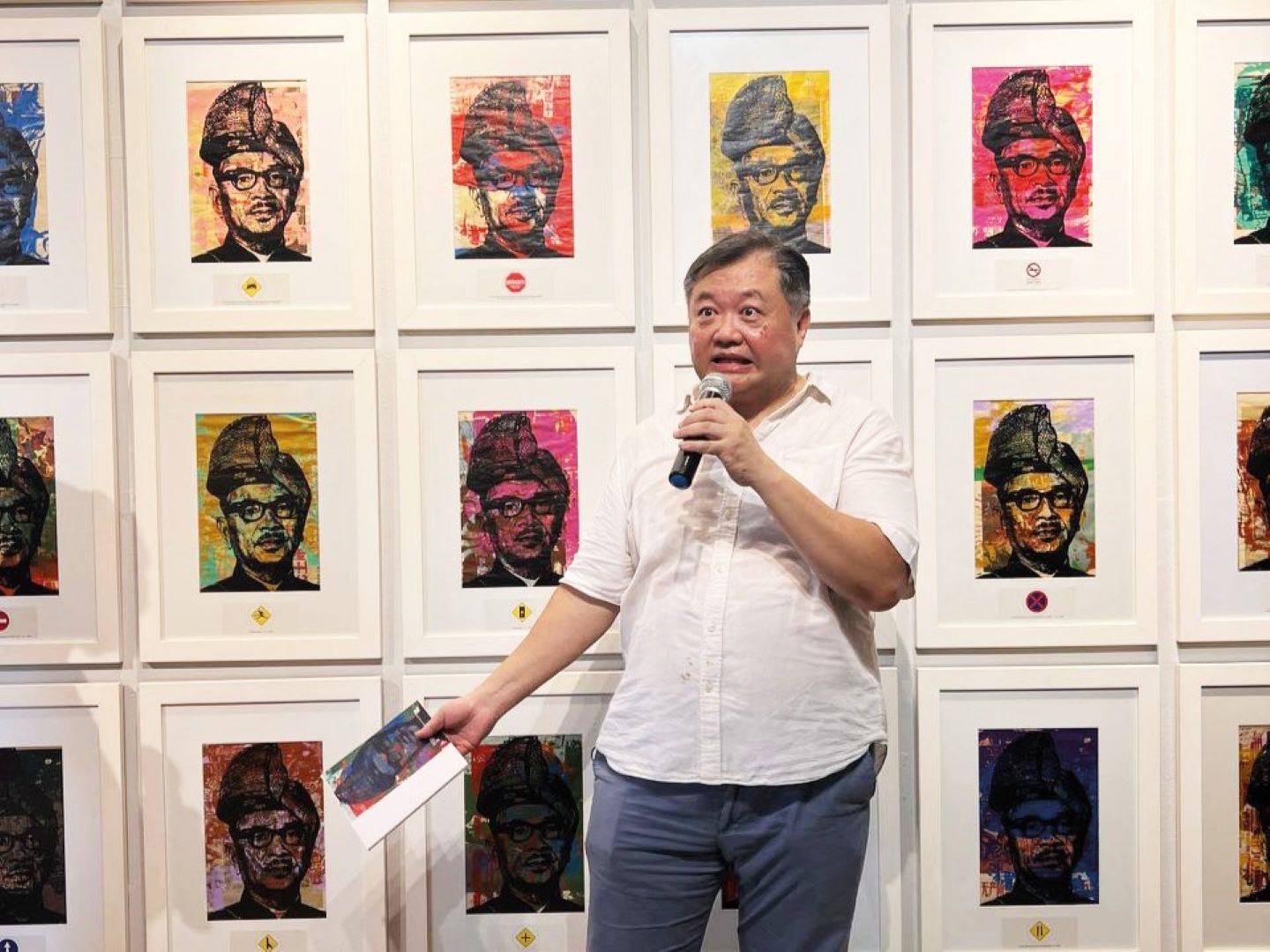
Banker and art collector Bingley Sim (Photo: Bingley Sim)
Art has always been one of the most powerful mediums for self-expression. The purpose of its creation, after all, lies in the desire to communicate ideas or evoke powerful emotions. But art may also be made for beauty and, thus, pleasure; but, most of all, it invites everyone — from creator to viewer — to explore the power of perception, think and contemplate what the canvas conveys. In this light, Options asked eight personalities in the local art scene to pick out a work from their collection that encapsulates the country’s independence.
Beverly Yong
Who: Yee I-Lann
What: Malaysian Dilemma (Horizon series), 2003
Why: I’ve lived with this work, this image, for 20 years. As a ‘nation’, we always seem stumped … at a fork in our path. But a dilemma likewise means there are always options, variants and possibilities. So, that’s not such a bad thing, to look forward, knowing there is not only one singular direction we have to move towards.
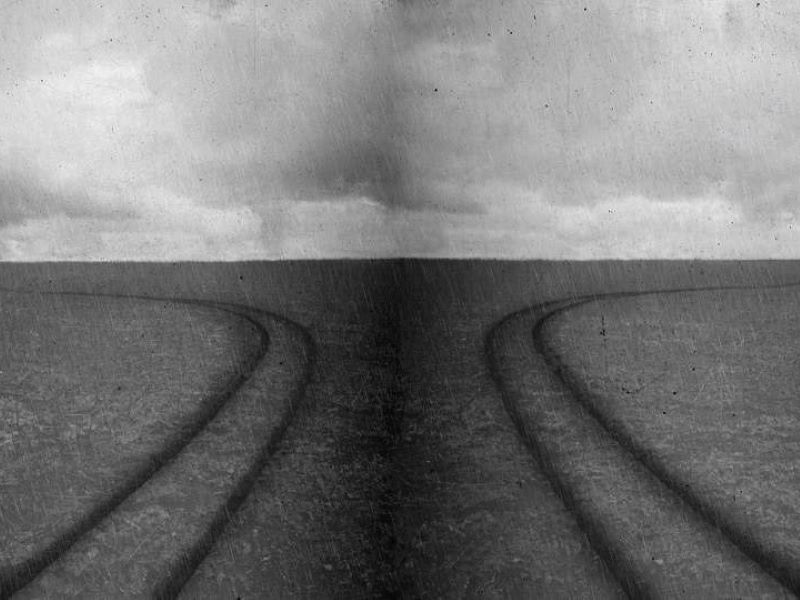
P K Ee
Who: Riaz Ahmad Jamil
What: Tiga Segi, 1999
Why: I always think of Riaz as the ‘missing chapter’ in contemporary Malaysian art. I chose this because 1999 was the year he created some really good works and also because I think people have largely forgotten about him. I’m not sure he’s [a good choice] to represent Merdeka, as he has gone through problems in the past and is reclusive, but I really like his energy, expression, boldness and non-trendy approach to producing art.
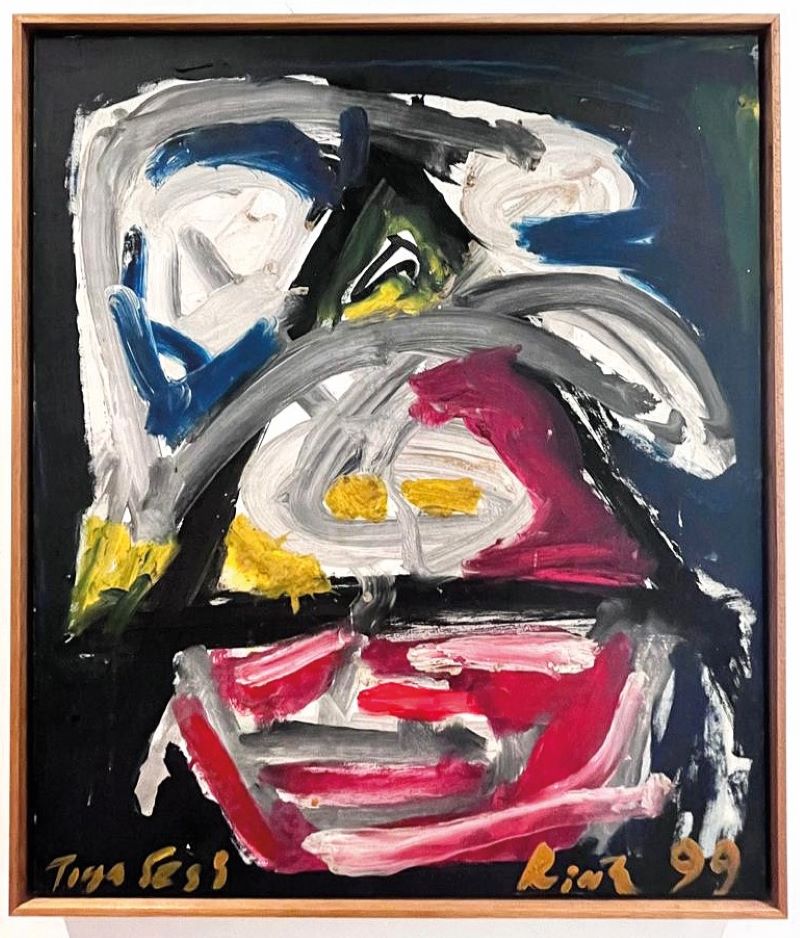
Bingley Sim
Who: Stephen Menon
What: The Journey: From Malaya to 1 Malaysia, 2013
Why: Stephen produced this 50-piece installation to commemorate the 50th year of Malaysia’s founding in 2013. The installation shows the foundation that Tunku [Abdul Rahman] laid for the nation. The differing colours reflect the diversity we have in terms of race, culture and religion, all bonded together as one. Road signs are used to signify all that we’ve gone through in the last five decades. Through thick and thin, good and bad times … law and order also kept things peaceful. Each piece with differing road signs also [displays] a quote by Tunku, and many of them are as relevant today as they were in the 1960s and 1970s.
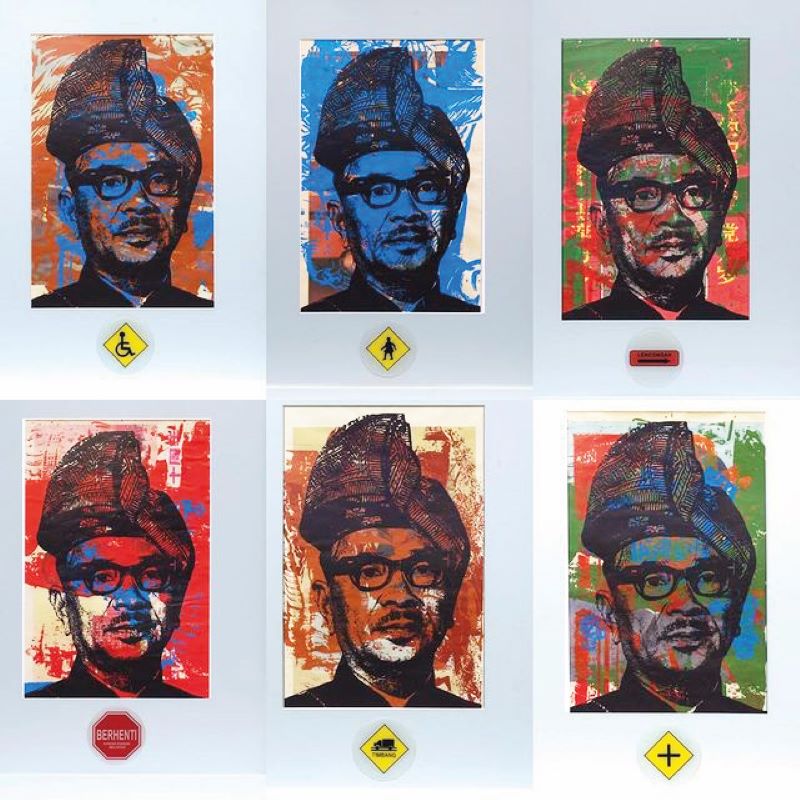
Dr Steve Wong
Who: Ahmad Fuad Osman
What: Recollections of Long Lost Memories #4, 2007
Why: It reminds me of the times when we could live peacefully and harmoniously, without racial and religious bigotry destroying the nation.

Datuk Ir Rosaline Ganendra
Who: Jalaini Abu Hassan
What: Collision of Kederat Badang, 2009
Why: This bitumen-on-canvas work captures the mythical Malay warrior, Kederat Badang, standing in defiance against colonists. At first glance, the invader, depicted by a Renaissance sculpture of Alexander the Great on his horse, looks gloriously magnificent but also brings toxic impact as shown in the background of the painting. I chose this because it is relatable, bringing to mind the overwhelming odds that our forefathers had to overcome to achieve Merdeka. At first, allowing a more developed nation to give us a guiding hand may seem the easier route towards progress but, in reality, colonisers only invade with the intent of taking, not giving. Thus, we as a nation must always strive for self-determinations despite the odds.
Suria Zainal
Who: Tajuddin Ismail
What: Andaman, 2016
Why: I have always loved Langkawi and I don’t know why so many of us always look to journeying abroad when we have the best right here. I chose this work because it so clearly evokes the mystical island. I have many fond memories of holidays with my family there, especially of the children swimming non-stop in the Sheraton Hotel’s swimming pool. I also like how it makes me think of the Andaman Sea and, of course, the work’s unconventional circular shape.
Tengku Datuk Seri Zafrul Abdul Aziz
Who: Muhamad Zaim
What: Negaraku — Check & Balance, 2024
Why: I bought this recently at the CIMB Hotel Art Fair and rising young artist Zaim’s work represents both a political and personal imperative for me. Having served in banking and finance for 22 years, I used to be on the ‘receiving end’ of policies. Now that I am in a policymaking role and having to deal with corporates of all sizes, I can see how the same check-and-balance rule is crucial to ensuring our policies equitably benefit as many stakeholders as possible, especially our SMEs, workers, women and youth. Parliament serves as an important enabling platform for our Malaysia Madani aspirations. Robust policies, strong implementation and good checks and balances are what will improve our beloved country’s future prospects … especially for the sake of our children and grandchildren.
Datin Che Nariza Hashim
Who: Chong Siew Ying
What: Dawn, 2017
Why: It is awfully difficult for me to narrow down works as favourites but, oddly enough, they seem to be the ones that reflect different aspects of Malaysia, be it cultural, political, social or even ones that touch on religion. This particular painting is different — a landscape of Janda Baik at dawn by Siew Ying. It rouses an emotion of loss, memories of my childhood growing up near Penang Hill and family trips to Cameron Highlands and Fraser’s Hill. The early morning view of mist hauntingly hugging treetops. I remember the air was chilly and pure then. It is a reminiscing piece because such places will not exist for long [as they are taken over] by condos, resorts and theme parks. Well, such is the price of development.
This article first appeared on Aug 26, 2024 in The Edge Malaysia.



